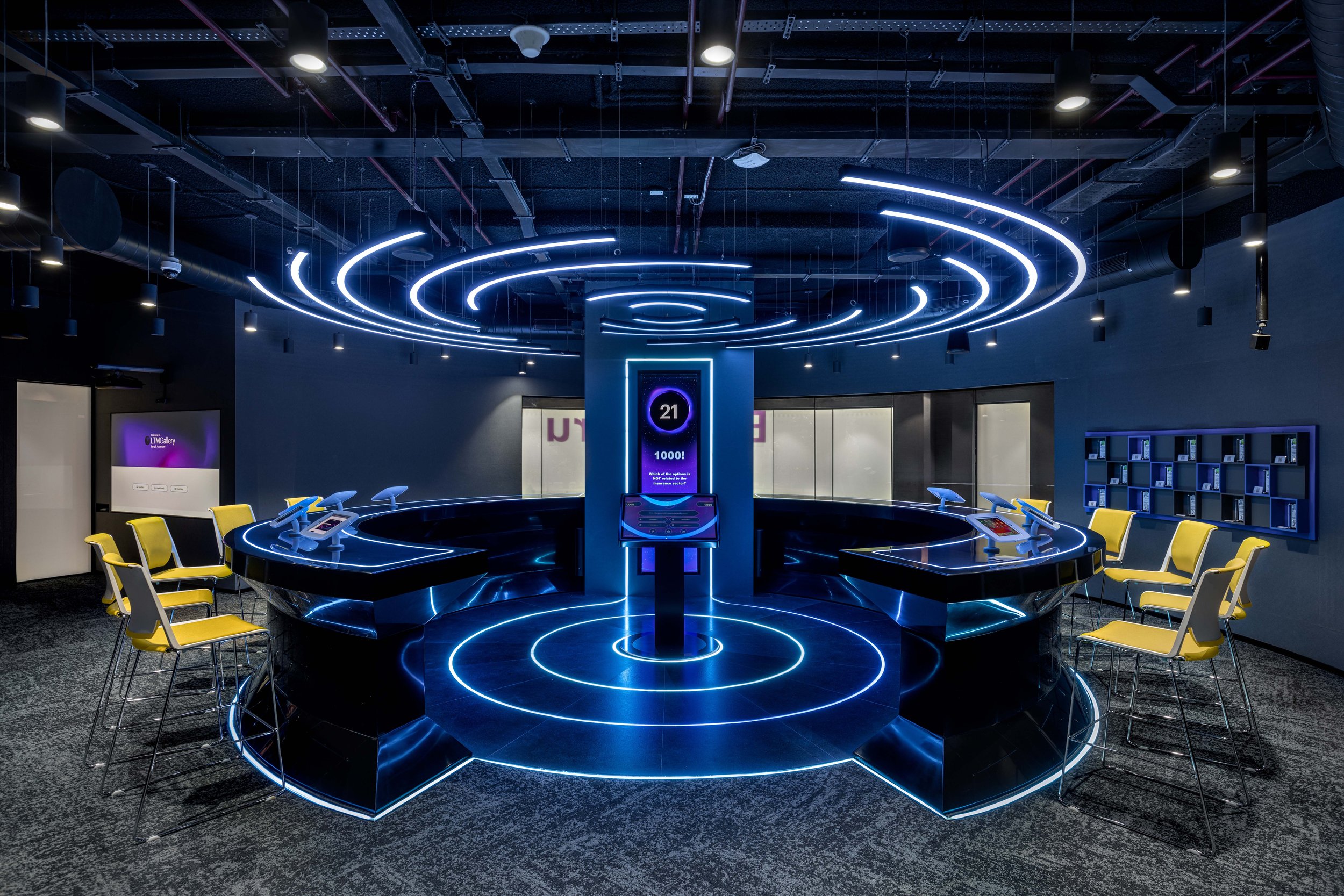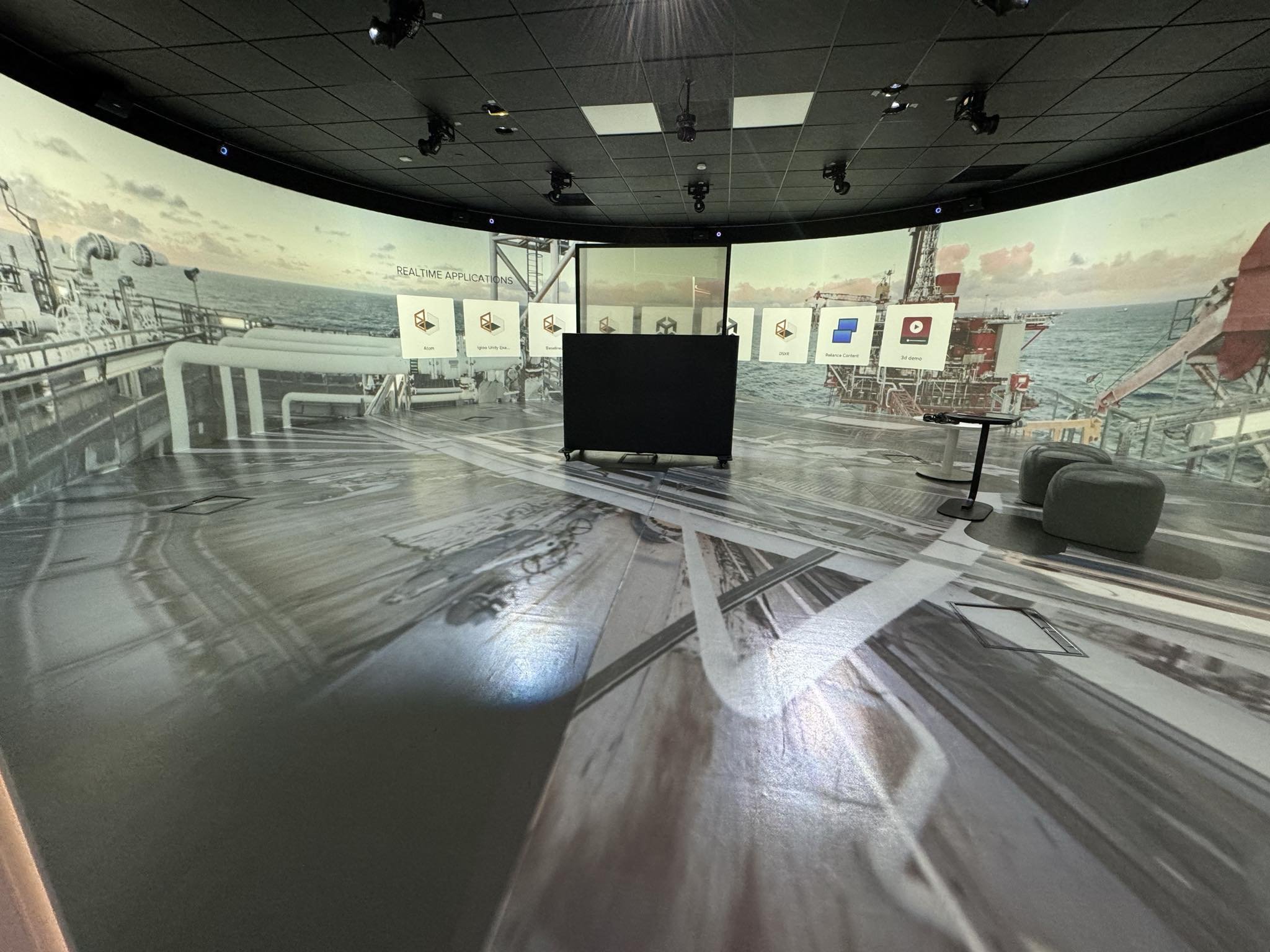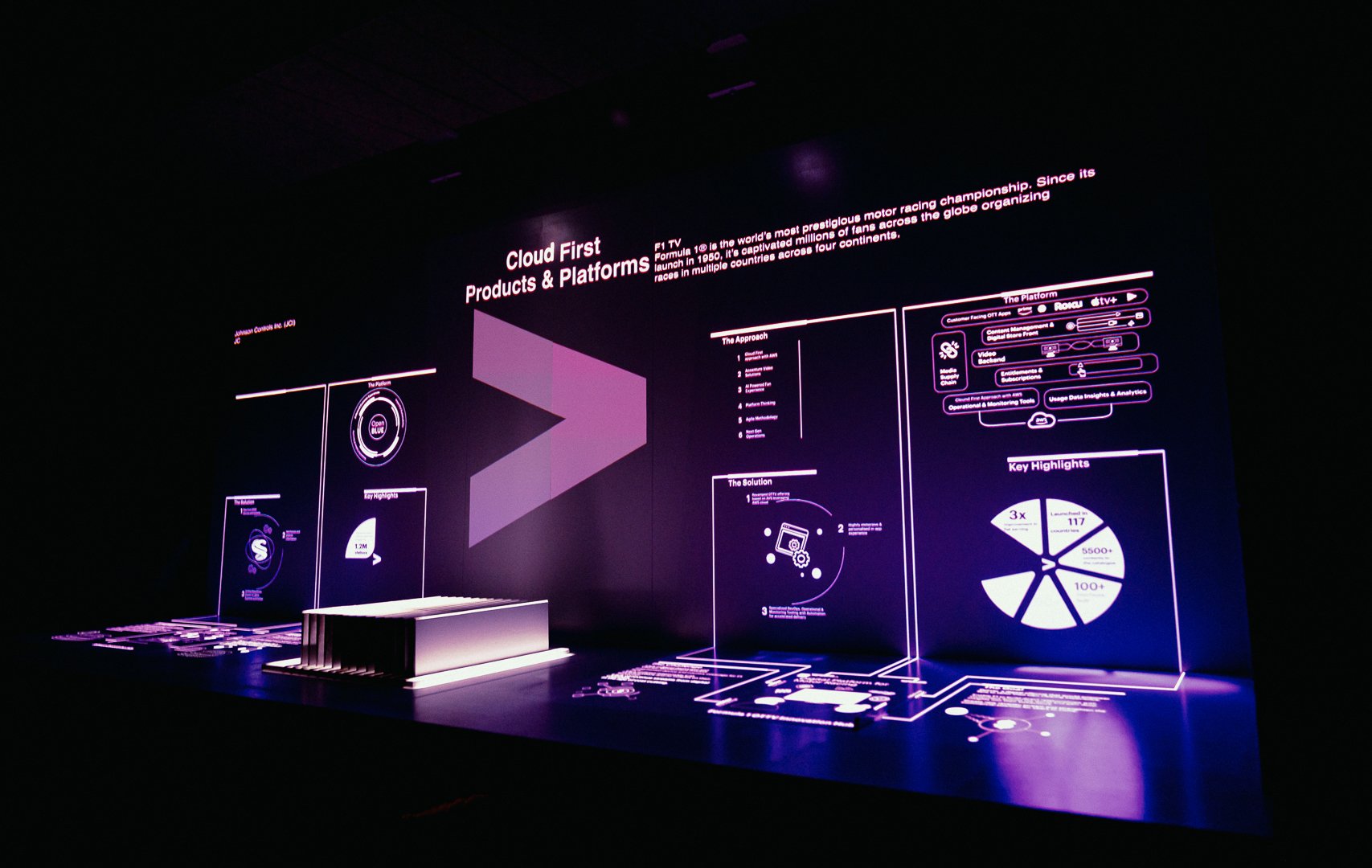Immersive & Interactive - What’s the Difference?
Written by Richard Cobbold | July 17, 2024
A client recently asked me to explain the difference between interactive and immersive. His business teams were asking for immersive solutions, but he wasn’t sure what that really meant. To help, we came up with the following four key differentiators and case studies:
Interactivity implies a single event. You touch a screen, and it responds. However, in an immersive experience, that same touch might trigger a whole host of different experiences. The touch controls not just the content on one screen, but the content on multiple screens. It drives the lighting, switches up the audio, and impacts the whole environment to create a complete audio visual experience.
For this corporate client, we created a quiz to gamify an employee induction course. Instead of just presenting a touch screen, we deployed a game-show TV studio-style set with multiple displays, light, and sound. Players answer questions about the company’s people and products while competing to top the leaderboard as their colleagues look on. A highly effective training tool and a true multi-sensory immersive experience.
Multi-sensory immersive experience.
Interactivity implies a user self-serving information from the touch screen in front of them. The idea of an immersive experience, meanwhile, is to put you right in the middle of that information. Perhaps in a virtual or mixed reality environment, using VR headsets or AR glasses, or a 180 or 360-degree content experience that surrounds you physically and envelops you into the presentation.
The closed, single nature of a standard VR experience isn’t ideal for experience centers, as it doesn’t deliver for larger groups. Often, the narrative works better when whole teams are able to share a common virtual experience. For this visualization project, we deployed a 360 Igloo projection dome, allowing up to 10 people to enter a fully virtual environment, diving into the data in a unique, visually immersive experience.
Visually immersive experience.
Interactivity implies a response to a direct touch. Immersive experiences, however, are not just touch-driven – they should react in intelligent and automated ways. Using AI and smart sensors, an immersive experience can understand your journey through an environment and automatically serve up relevant and evolving experiences. You don’t physically interact with this kind of immersive environment; it is automated and delivers its interactivity seamlessly.
For this project, users were invited to select from a library of printed case study boards. When placing the specific case study onto the table, whole video and graphical sequences are automatically triggered, bringing the story alive as a captivating and smart-tech immersive experience.
Smart-tech immersive experience.
Immersive experiences can also serve to bring remote teams together. In the hybrid work environment, being able to bring remote participants seamlessly into your meetings, design sessions, or client presentations can be critical to ensuring effective outcomes and driving productivity. Immersive technologies can blur the lines between the physical and the digital, bringing teams together in new and unexpected ways.
Using a combination of AI-driven multi-camera speaker tracking and intelligent audio, with cloud-based content sharing, we were able to turn this executive briefing center into a truly hybrid environment. Remote participants can seamlessly follow and engage with the physical teams in the space via the automated conferencing technology and can interact and engage with the presentations via real-time cloud-based content links. An example of hybrid immersive capability.
Hybrid immersive experience.




